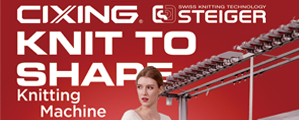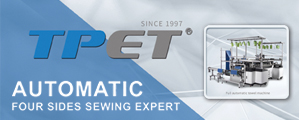Top model turned fashion tech pioneer inspires new makers
Jun 23, 2017 | by Karli Petrovic
Anina Net went from runway model to wearable tech maker, paving the way for the next generation of tech-savvy fashion designers.
After completing a fashion campaign for Gas Jeans, model Anina Net walked through the streets of Milan. Her face was everywhere: magazine covers, billboards, sides of buses. In that moment, she had a profound realization.
“I had this huge megaphone of media, but it had no meaning or message,” said Net. “I thought, ‘What could I do to have an impact on the world?’ I’m not sending people to the moon, I’m a fashion model.”
Net quickly evolved from a model to a fashion industry pioneer. Early on, she discovered how technology could benefit fashion shows and installations. She started a mobile-friendly behind-the-scenes blog and developed Intel Curie-powered shape-shifting robot dresses. Her LED motion-detecting gloves were featured on China national TV during a special Chinese New Year dance presentation.
She bundled her knowledge and technologies into kits to help designers and makers create their own fashion-tech prototypes — all without writing a line of code, embedding a servo motor or even soldering electrical wires.
Net is paving the way for others to create a career in fashion technology, something that was hardly an option until recent years. She is among a new wave of designers using 3D printers to bring sci-fi fashions to the runway and reimage the cocktail dress as a stunning, even deadly outfit.
Long before she hit the big time on the runway, Net was a tall, German-speaking misfit growing up with her two brothers in Northern Michigan. Her father was a private school math teacher who wanted his children to be engineers. While other kids spent their summers outdoors swimming and hiking at camp, Net and her brothers learned about computers.
“I was never excluded from technology,” she said. “When my brothers went to code camp, I had to go to code camp. When there was something wrong with the computer, my dad required us to fork out the hard drive together. I wasn’t ever set apart from technology because I was a girl.”
These differences — both physical and cultural — forced Net to develop a strong sense of self. This helped her pursue a true passion that she hid from her techie family: modeling.
“When I became a fashion model, my family disowned me for five years,” Net said. “No one talked to me. They tried to bend me to their will of becoming an engineer, and that just wasn’t going to happen.”
Returning to Her Techie Roots
But the apple doesn’t fall far from the tree, and computers were still in her blood. When Net later reconnected with her techie roots as the first-ever model blogger, her career took off. The blog gave others a behind-the-scenes look at the fashion industry, from showcasing her portfolio to revealing the happenings backstage at the catwalk.
However, Net was far ahead of her time. It caused pushback from the fashion industry. For all the innovation that emerges from the runway, most insiders weren’t thinking about how technology would change the future of fashion, she said.
“Nobody in the fashion industry wanted to use technology, none of them. They would ask me stupid things like, ‘Who would ever download a mobile app? Why would you ever want to put LEDs in your clothing? Who would ever dress a 3D version of themselves? You’re narcissistic.’”
Every time she tried to show them — whether it was augmented reality (AR), virtual reality (VR) or something more complicated — nobody wanted to do it.
Today, technology is ubiquitous. The fashion industry hasn’t escaped its impact. From VR fashion shows that plant remote viewers in the runway’s front row to dresses that react to invasions of personal space, designers are racing to find the latest ways to integrate lights, sensors and button-sized modules into their garments.
China’s Top Techie Model
Despite the initial negativity, Net kept creating. She developed Anina Dress Up, a fashion dress up game with Adobe, and launched a DIY fashion app platform called MobileMags to support emerging designers. And, eventually, she found a responsive audience half a world away — in China.
“I was like, ‘That’s it, I’m out of here. I’m going where there are 1.3 billion people, they all have cell phones, they know what blogs are, and they have avatars of themselves and they download clothes to them,’” Net said. “‘China is an emerging economy. I’ll just go there and become China’s top foreign model, and then I’ll open my company, and I’ll just do technology from the top down.’”
Once Net arrived in China, the stars began to align. She founded the 360Fashion Network in 2005 in Paris, France as a real-time fashion news portal fueled by behind-the-scene footage captured by mobile phones. She opened 360Fashion Network company in Michigan in 2008 and a year later opened a subsidiary in China. She worked with the China National Garment Association and showcased different technologies can be used applied to fashion.
She also partnered with top technology brands to bring innovative ideas to life, including the Intel-Curie powered 162 motion-sensing LED gloves that synced to a live dance performance.
Not only was Net able to accomplish all her goals, she also figured out her message.
“If we have more women who are using technology, we will have more different types of services,” she explained. “We’ll have another perspective on it. It will look different, and maybe it will do different things.”
The idea was to make tech cool and fashionable. If she could inspire girls and women as “the techie model,” she could bring diversity to industries like engineering, manufacturing and coding. Her new 360Fash Tech Kits offer easy starting point.
These 12 kits supply designers with everything they need to integrate technology and take their creations to the next level without coding or soldering. Drag-and-drop software means anyone can figure out the logistics of their vision, whatever that looks like.
One innovator used the Proximity Kit to design a wedding dress that illuminates when the bride stands next to her intended. ROMASTER created the Qi Suit — a tailored suit that translates Tai Chi movements into light patterns — using the Gesture kit. A kit based off the responsive LED glove is in the works.
Net said the kits take away the intimidation factor, leaving the creators to be as imaginative as they desire.
Inspiring and Educating Designers
“If we don’t make tech beautiful and accessible for people, we won’t get tech that has the turnaround effect,” she continued. “When we forget the keys and we’re in a hurry, we go back to get them. If we’re late and forget our fitness trackers, we probably won’t.”
Turnaround technologies may be a bit far off, but Net’s media megaphone is making headway toward her goal of inspiring women.
“Fashion is wonderful way to attract more women to science and tech through skills they might already have like crafting and sewing,” she said. “The most rewarding thing is when young girls say, ‘I want to make a robotic dress’ or ‘I want to use the LED ribbon in my prom dress.’”
Net wants the next generation of innovators to disregard the naysayers.
“Look forward, rather than focus on what others are doing,” she said. “Don’t lose your dream. There’s something magical out there for everyone, and when you buckle down, the universe and heavens collide to help you.”








